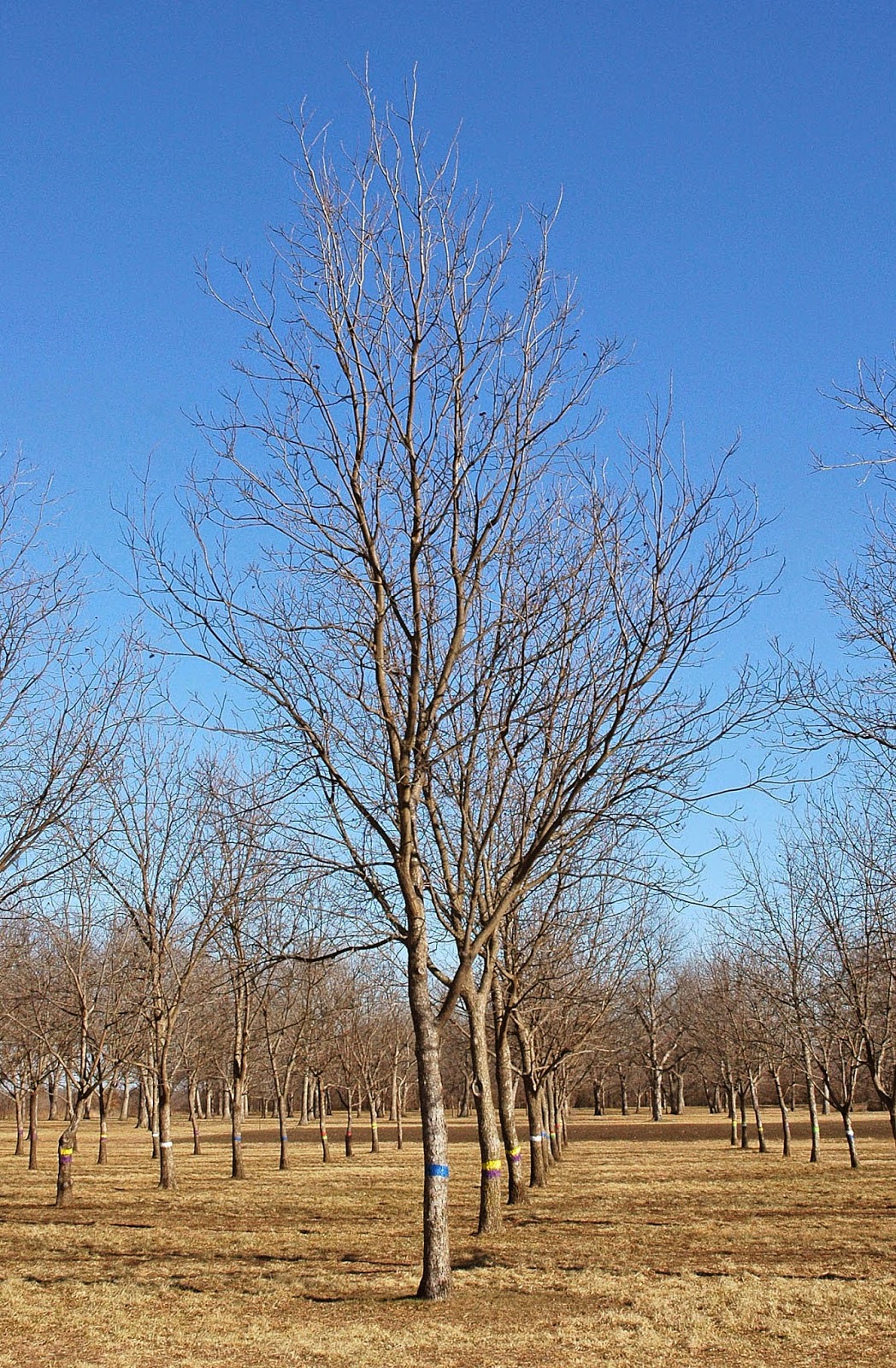 |
| Osage, narrow and upright |
Often overlooked in discussions of pecan cultivars is a scion's natural tree architecture. Does a tree have an upright or spreading canopy? Do limbs grow out at nice wide angles or are branch angles narrow and prone to breakage? For anyone that has tried to train a young, grafted tree you soon learn that some cultivars are far easier to train into a central leader tree than others.
 |
| Greenriver, vase-shaped |
Each cultivar has a distinctive growth pattern. Today, I took advantage of a warm sunny day to photograph the architecture of a few cultivars. I chose these cultivars to give you a feel for the variation we see among pecan cultivars. It is difficult to quantify pecan tree forms but look at enough trees of the same cultivar and some descriptive words come to mind.
Osage is a narrow, upright growing tree prone to forming narrow branch angles. Giles is just the opposite. Giles trees grow wide, sprawling canopies that produce drooping branches. Greenriver produces a vase-shaped tree while Chetopa forms a rounded canopy.
 |
| Chetopa, rounded canopy |
 |
| Giles, sprawling canopy |
The trees pictured above are all twenty years old. Does tree architecture change as a tree ages? If the wind, ice, and lightning don't cause major structural damage, the growth form of a cultivar remains fairly consistent. The photos below show a 20-year-old Kanza tree in comparison to a 50-year-old Kanza tree. The older tree is more than twice the size of the younger tree but you can easily see how both trees share the same pattern of tree growth.
